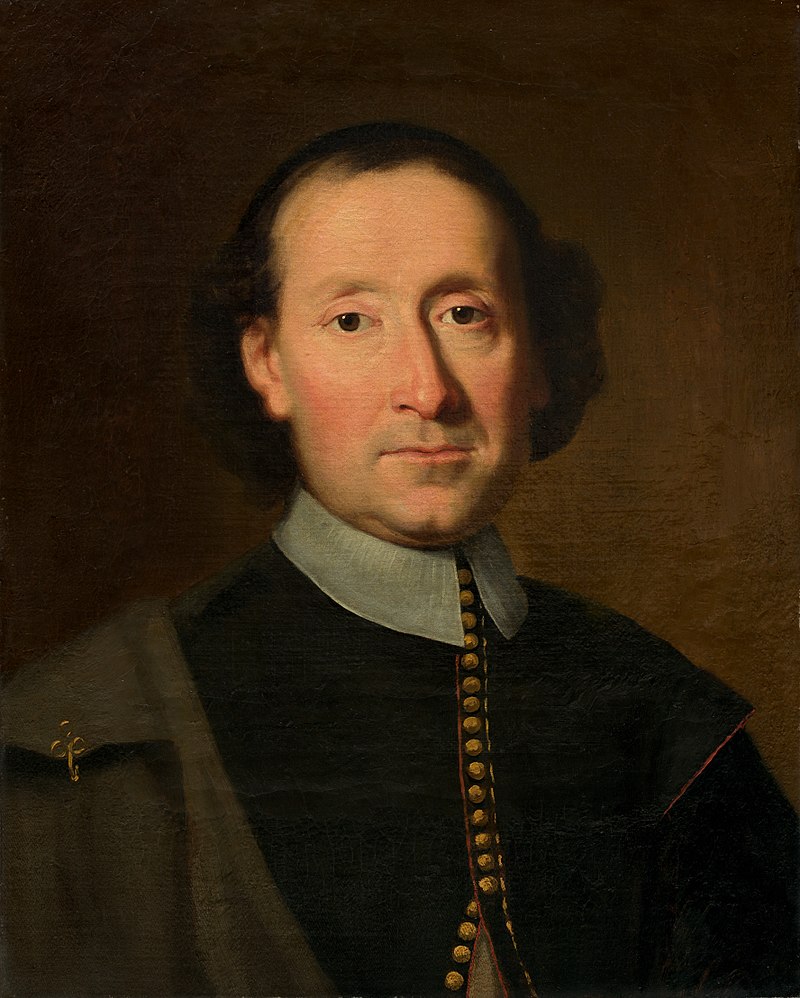
The National Gallery of Art in Washington, D.C., has determined that in the twentieth century this painting passed through a pair of art dealers who were known to forge the provenances of some works, and thus now considers the subject uncertain.
Shorto, Russell (2004) The Island at the Center of the World. New York: Vintage Press. pp.112-113. ISBN 978-1-4000-7867-7
Breda, (in the province of North Brabant) son of Cornelis van der Donck, who appears in New Netherland in 1655. Adriaen van der Donck was commissioned officer of justice, or schout, of Rensselaerswyck, May 13, 1641, and sailed four days later by den Eyckenboom.
He occupied a farm on Castle Island till Jan. 17, 1646, when the house was destroyed by fire and he and his wife, the daughter of the Rev. Francis Doughty, temporarily accepted the hospitality of Antony de Hooges. Feb. 23, after a quarrel with de Hooges, he left the latter's house and moved to the fort (see de Hooges' account of the quarrel, O'Callaghan, History of New Netherland, 1:469-70, erroneously attributed to van Curler, who was at the time in Holland). May 3, 1646, van der Donck was still in the colony, but soon after he left and established a sawmill and plantation on the Saegh kil, in his colony of Colendonck, in the present city of Yonkers, for which he had obtained a grant in 1645.
Before leaving Rensselaerswyck, he transferred to Cornelis Segersz van Voorhout the remaining three years' lease of his farm on Castle Island. He was succeeded as officer by Nicolaes Coorn. Early in May 1646, in an account with Abraham Clock, de Hooges refers to van der Donck as de Joncker, which is probably the earliest mention of the title and which may have reference to his having recently become proprietor of a colony. Adriaen van der Donck died in 1655.

